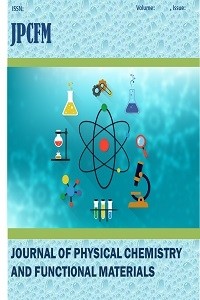Synthesis, Characterization and Theoretical Anti-Corrosion Study for Substitute Thiazole Contained Cyclobutane Ring
Synthesis, Characterization and Theoretical Anti-Corrosion Study for Substitute Thiazole Contained Cyclobutane Ring
Thiazole, Cyclobutane Ring DFT, HOMO-LUMO, Anti-corrosion.,
___
- 1. R.A. OMER, et al., Computational and spectroscopy study of melatonin. Indian Journal of Chemistry-Section B (IJC-B), 2021. 60(5): p. 732-741.
- 2. O. Rebaz, et al., Theoretical Determination of Corrosion Inhibitor Activities of Naphthalene and Tetralin. Gazi University Journal of Science: p. 1-1.
- 3. R.A. Omer, et al., Theoretical analysis of the reactivity of chloroquine and hydroxychloroquine. Indian Journal of Chemistry-Section A (IJCA), 2020. 59(12): p. 1828-1834.
- ISSN: 2651-3080
- Yayın Aralığı: Yılda 2 Sayı
- Başlangıç: 2018
- Yayıncı: Niyazi BULUT
Review on Surface Texturing Method for Solar Cell Efficiency Enhancement
Razaw Dindar HUSSEİN, Dilshad ISMAEL
A Review on DPA for computing radiation damage simulation
Hiwa Mohammad QADR, Dyari MAMAND
Abdu BELLO, Abubakar HAMİSU, Naziru Muhammad ALHASSAN
Influence of crushed sand on the dynamic modulus of elasticity of sand concrete
Theoretical Analysis of the Reactivity of Carmustine and Lomustine Drugs
Rebaz OMER, Lana AHMED, Ibrahim QADER, Pelin KOPARIR
The Determination of Eigenvalues and Eigenvectors of the Orbital Angular Momentum
Kishwar Mohammed WASMAN, Saman MAWLUD
Review of Optoelectronic Properties of ZnO Photodetector
Kishwar Mohammed WASMAN, Bestoon HAMADAMEEN
A review on Physical Properties of CdS Thin Film
Razaw Dindar HUSSEİN, Adeeb JAFİR
Theoretical inhibitor Calculation for Synthesis of Two New thiazole Derivatives
